KSysGuard/it: Difference between revisions
Created page with '==Carico di sistema==' |
Created page with 'La scheda <menuchoice>Carico di sistema</menuchoice> presenta tre aree, ognuna delle quali rappresenta uno delle aspetti del carico del sistema: Cronologia CPU, Cronologia memori...' |
||
| Line 10: | Line 10: | ||
==Carico di sistema== | ==Carico di sistema== | ||
La scheda <menuchoice>Carico di sistema</menuchoice> presenta tre aree, ognuna delle quali rappresenta uno delle aspetti del carico del sistema: Cronologia CPU, Cronologia memoria e swap e Cronologia rete. Se passi il mouse sopra ogni sezione potrai vedere un'analisi dettagliata insieme con una legenda dei colori utilizzati. | |||
{|class="tablecenter" | {|class="tablecenter" | ||
Revision as of 13:00, 5 October 2010
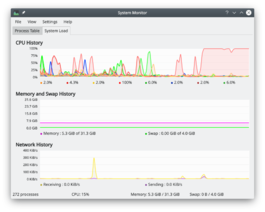 |
Segue e controlla i processi in esecuzione nel tuo sistema. |
Generale
KSysGuard è progettato per offrire all'utente la possibilità di controllare i processi facilmente, senza bisogno di fare alcuna configurazione speciale - le impostazioni predefinite sono di solito perfettamente adeguate. Ci sono due fogli di lavoro (schede): , visibile sopra, e la.
Carico di sistema
La scheda presenta tre aree, ognuna delle quali rappresenta uno delle aspetti del carico del sistema: Cronologia CPU, Cronologia memoria e swap e Cronologia rete. Se passi il mouse sopra ogni sezione potrai vedere un'analisi dettagliata insieme con una legenda dei colori utilizzati.
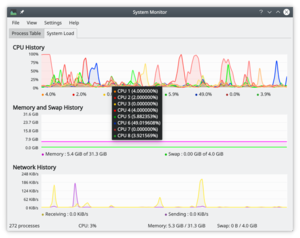 |
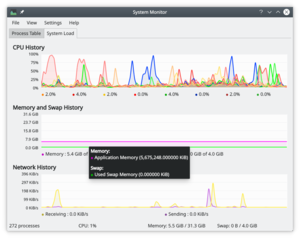 |
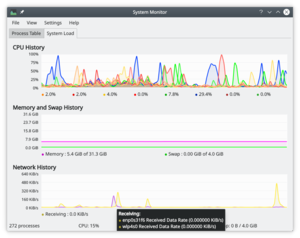 |
The Process Table
The view by default gives you an alphabetical order list of all processes running. Clicking on any column header will make this the sort column. If you have a runaway process you will find the view most useful. You can also elect to see sub-sets of the processes, by owner or program.
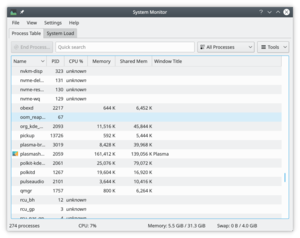 |
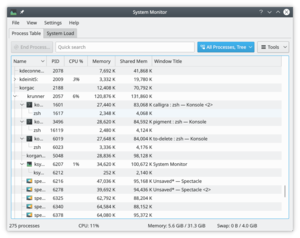 |
Hints and Tips
Ctrl + Esc brings up the Processes part of KSysGuard, which is very helpful when you are trying to find which application is using too many resources.
In KRunner (Alt + F2 or from a right-click on the desktop) there is a tiny icon to the left of the entry bar - it looks like a microwave oven - that also brings up the Process Table.
